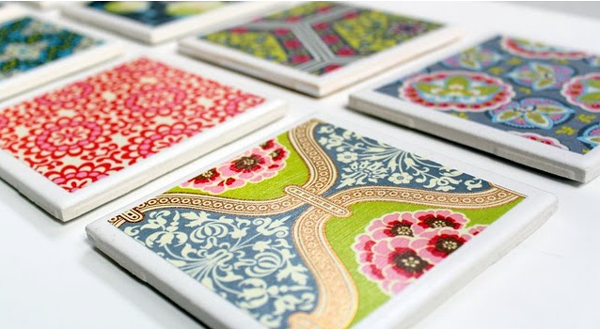Many DIY tilers want to create an elegant or at least a clean design throughout a tile project in the home. This can be achieved with ease if some simple steps are taken. With a little help in design and alteration in tile layout anyone can find cost effective ways to give a new look to any dreary room.
The first issue is selecting the tile. They can range from 50 cents per square foot to $450. Choosing a tile that fits a budget is sometimes difficult. Everyone wants style, color and higher grade materials but when on a budget choice may be overtaken by cost alone. Take the time to visit outlets and see what overstocked or discontinued tiles are available. Often many stores have stock that has been ordered and never picked up for a project. This can be a major cost savings advantage by buying a high end tile at a budget price. When searching for cost savings, take a look in for a Denver Tile Outlet or any other outlet in the local area.

The next step is to decide what proper tools will be needed for a given project. This involves some of the following:
- Tile Cutter—depending on the project everyone will have to find what kind of cutter to use. This can include a cheap tile score or a wet saw. Often with wet saws it’s best to rent then purchasing as it’s use is limited for most DIY project homeowners.
- Tile Spacer—there are many kinds of spacers and they come in different sizes. Be sure to discuss this with the tile store to be sure the grout line is right for the tile purchased.
- Tile Nippers—these hand held nippers can be very effective for trimming out tile and piece that are obstructive. Take a look into buying a few pairs as they will come in handy in any project.
- Sponges—several large sponges will be needed to clean up after the grout is installed. Be sure in this case to have several buckets as well for water to clean them as the grout is removed from the surface.
- Basic Tools—it’s wise to have a square, tape measure, rubber mallet, putty knife, safety glasses and a level. The level here is important to keep all wall and floor surfaces flat. The rubber mallet will help with tapping the tiles into place for a tight fit.
- Notched Trowel—to best find the size of the trowel needed consult an expert or ask the store where you are purchasing the materials they can easily help in this selection. Also be sure to purchase a grout float, another item that will be needed when finishing up a project.
- Other Items Needed—be sure to buy knee pads. This will be important to everyone who is not a professional tiler and not use to being on their knees for long periods of time.
Take the time to investigate the cost bases of all the project materials. The cement board, underlayment for floors, mortar, bonding agents, mounting screws and other items are just another cost factor into a complete job.
A basic rule for tiler is “if it’s a focal point then go for the bang, if it’s not then go for the buck”. This falls true when pertaining to fireplaces, offset walls and back splashes. Often homeowners are being crafty with unique approaches to giving a facelift to tiled walls. Buying a simple stencil and paint over tiles with a proper easy to clean paint can bring a new design to tiled back splash or focal points. Glass mirror tiles are another cost effective and easy way to give a facelift to a room. With mirror tiles anyone can set a unique pattern, variant sizes and tinted colors. Also give thought to applying tin ceiling tiles to wall surfaces to give a unique touch. Applying these tiles in raw tin or in painted and antiqued surfaces is a great eye appeal for many searching for a different style. For more information on a wide choice of tiles take a look in for a Denver Tile Outlet or any other outlet in your local area.
All DIY tilers are looking out for the bottom line. From selection of the tiles to the final step everyone is thinking cost versus outcome. Don’t give up ideas based solely on cost, take the time to shop around, get online and bargain hunt like never before. The time afforded will most likely be one of the best cost savings measures you can make.
Mitch Sanders is now a shop manager at a local DIY store and is very happy too.

